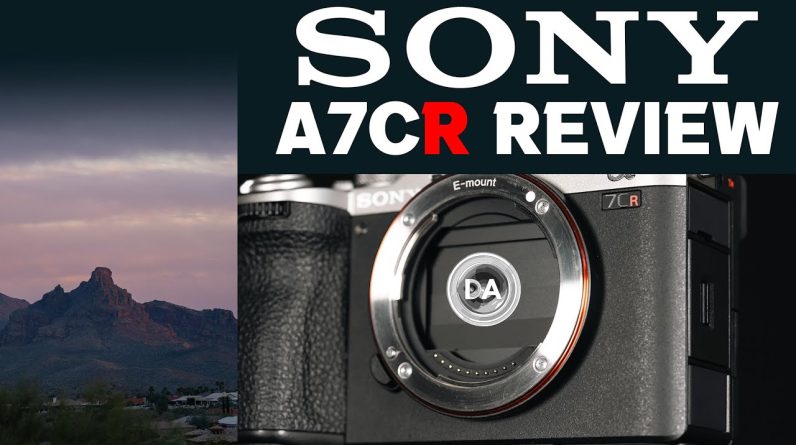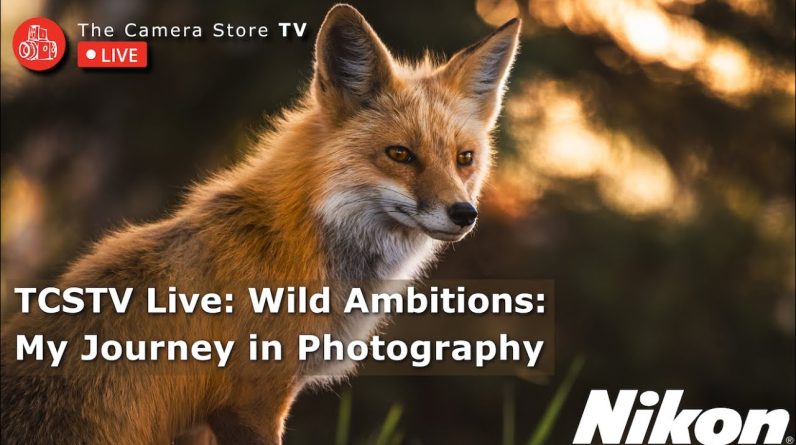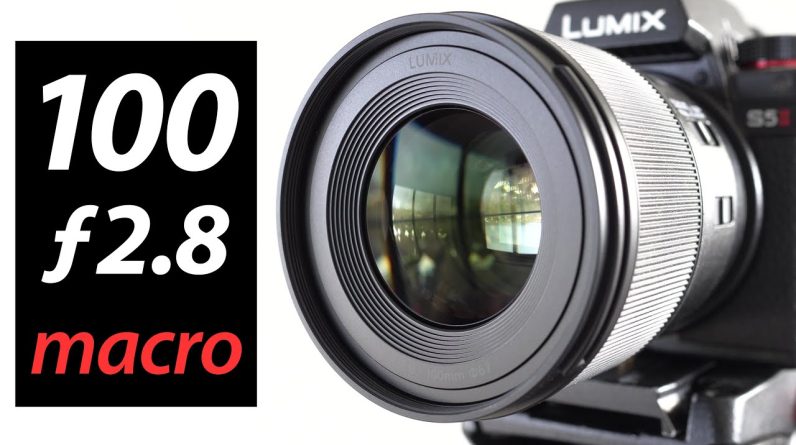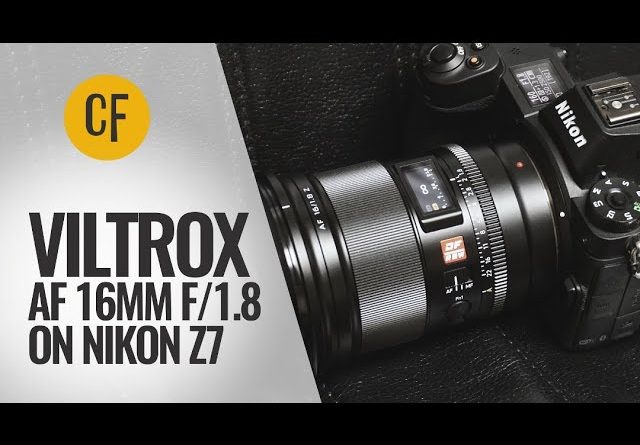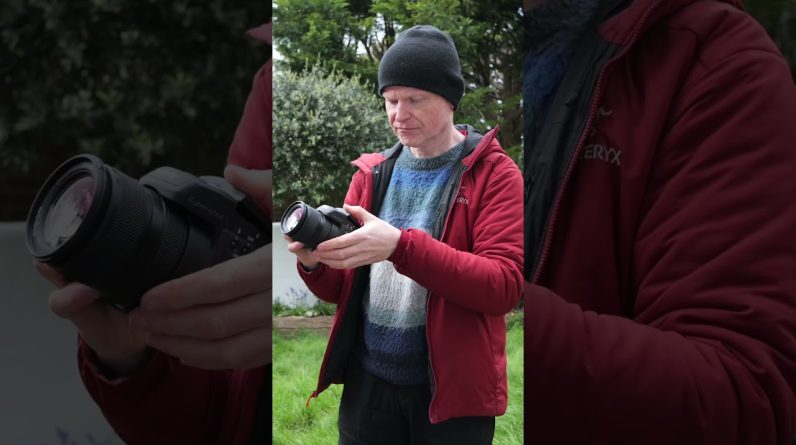[Music] Hi I'm Dustin Abbott and I'm here today Today to give you my review of the Second of the typo Samra lenses this is The tybo Samra 35mm f1.4 and this is for Leica M Mount And only for Leica Mount now tyo Obviously is a new lens maker and this Is their first two lenses that are Coming to Market and they are targeting The Leica M Mount Rangefinder crowd with These Samra lineup of lenses that are Very nicely made optically interesting As we'll explore here today and Obviously come in at a much much lower Price point than their Leica Counterparts now the brand typo that You're probably not familiar with is a New brand the name comes from Two Old English words that are focused on your Individuality and living in the moment Similar is the word Samara which is a Greek word and it refers to to living in The moment living in the now and so Obviously they are focused on trying to At least Market into the individuality And that freedom of expression that is Often a part of the Leica aesthetic so We're going to dive in today and see Whether or not they've actually pulled It off and are these compact lenses Including this 35mm f1.4 are they worth Buying well let's jump in in detail and Let's explore it together so I've
Obviously am reviewing the Silver Version of this lens but both of these Lenses do come in both silver and black Editions they retail for $699 now obviously for a manual Everything lens a fly compact lens that May not sound particularly cheap but When you consider that the kind of Direct competitor from Leica is the Summicron m 35mm f1.4 and it retails for $ 5600 all of a sudden this is sounding Pretty much like a bargain considering It is you could buy eight of these for The price of that single like a lens Everything here is really beautifully Made it is all metal and glass and that Is right down to the Caps uh which are Really beautifully made great attention To detail the lens H Hood which is a Rectangular design with you know 45° on The the Four Corners that looks you know Kind of similar to what some of the Other Rangefinder designs are out there So they're obviously logging into that Overall aesthetic there but everything Here is really really nicely made and as We're going to explore I really was Impressed with the attention to detail In a number of areas that for a new lens Maker they really seem to check a lot of Boxes of some maturity in their lens Design now the lens is very compact in Fact this is the smaller of the two
Lenses it is 54 mm in diameter or 2.1 in It has a 49 mm front filter thread and It's a little bit shorter in length it's Right under 51 mm in length or 2.1 in and it is 3 25 G or 11.6 o in weight and so it runs About 15 G less than what the equivalent LOL lens is so it does feel like it has Some heft to it but at the same time It's that kind of density of a quality Construction and it's not an actual Heavy weight it still is very nice and Balances even on compact cameras quite Well the focus ring here is nicely Designed there's a few attentions detail There that I want to highlight they're Nicely scalloped sections that have ribs On each of them on the high points make It very easy to grip and to move the Focus action is very smooth but there is On each end there is a a differentiation Of that on the wide end there's a Recognition of the fact that most Rangefinder bodies will only focus as Closely as 70 cm and so there is a Friction point there that you'll run Into a little bit of resistance before You can push all the way to the minimum Focus Focus which in this case is 45 cm So there's a little bit of focus range That is kind of behind what is similar To kind of a detent for uh an aperture Ring something similar to that and then On the other end there is actually an
Infinity lock and the purpose of that is If you put it in the infinity lock Position hopefully it's aligning Perfectly with infinity which on this Copy it does seem to do by the way but Then also it gives you a fixed and rigid Position that makes it easier to mount Or unmount the lens because uh Everything is not rotating while you try To do that but the focus throw here is About a 100° it moves very nice and Smoothly I will note that if you're Trying to focus Towards the uh the minimum Focus point If you're doing a focus throw hitting That kind of detent does kind of throw Off a focus throw so I don't love it for That reason but then again I'm not Testing it on a rangefinder body so it's It's not something a feature that I Actually need what I do find is Obviously there is a fairly significant Difference in the magnification between The front object you can see in this Focus pool and then the rear object the Rear object is at that 70 CM point the Front object is at the 45 cm point so it Shows you that extra bit of Magnification you're going to get uh if You focus all the way to minimum Focus now this lens is an internally Focusing design and so nothing is going To move in or out during Focus action Now the aperture ring also shows shows a
Few unique attention to details the most Notable of that is on the back side in One of the ray sections it actually is a Switch that allows you to move between a Clicked and a declick aperture and so When it is clicked you have the typical 1/3 stop to T at the large apertures Until you get to f8 and after that it is Single stop to tense but overall uh Everything feels good there and then if You switch it into the def or the dclick Mode everything moves nice and smoothly To allow you to do uh you know aperture Racking and another kind of unique thing That you'll see is rather than a Traditional hyperfocal markings there is These really interesting uh dotted areas On the area between the two rings that Will actually light up not light up but Rather red will show behind the cutout Po portions that will actually show when You're getting into the various Apertures As you move up to them it will Show you a new point to put Infinity at For hyperfocal distance and so it's it's Kind of an interesting touch there now We noted that the aperture Iris itself Is really beautiful there are 14 rounded Blades and it does a really fabulous job Of maintaining a circular shape which Means that as you stop The Lens down You'll continue to get round or circular Boka highlights even though this can Focus down closer than the you know
Standard 70 CM that will make you switch Into live view to focus on a rangefinder Body 45 cm is still not particularly Close for for a 35mm lens and so as a Byproduct you're going to get a pretty Low magnification of 0.09% somewhere in that range so nothing To write home about I was able to get Closer than that because I did a lot of My tests on the tech art LM ea9 adapter Which functions almost like an extension Tube that allows you to focus more Closely than that which can be handy Obviously in these kinds of situations Overall however the attention to detail Is really nice here there's more feat Fe Than what I anticipated on the lens and It does handle really nicely so let's Talk about the image quality and in this Section I'm going to give you an Overview of image quality and then we'll Do an optical Deep dive at the very end For those of you that want to go deeper So as we take a look here at the lens Design This is a design of nine elements In five groups that includes one Aspherical and three um High refractive Index elements and so those help to Achieve a nice Optical performance also There is a floating element group that Allows you to get better performance up Close which is also appreciated a little Bit of a modern touch there in the Design now if we take a look at the MTF
Chart you can see that it is solid but It's not exceptional one uh difference That I did see compared to the two Lenses that wide open it's fairly Comparable but there's a little bit more Here when stop down a little bit more Improvement stop down so I think the 28 Mm is a hair better wide open but Doesn't have a as much latitude for Improvement when stopping down whereas This lens does is less good wide open But does make do a better job when Stopping down so as far as kind of Looking at some of the various details Of the optical performance this lens has Next to no Distortion there's about a 1% To 2% Distortion there and so not really Hardly worth worrying about much more Worthy of Correction is the fact that There is a good solid three stops of Vignette and it is a rather than being Completely linear like some Zeiss lenses Where it kind of gradually moves up it's Not concentrated in the corners but There's more in the corners than what There is as it moves forward as a Byproduct I find that particularly since I'm shooting in winter with snowy Foregrounds I really do feel like I need To correct it sometimes when I'm Shooting wide open because the darker Corners are just not all that uh Flattering now in other seasons and in Other conditions it's less noticeable
Now the lens is not bad when it comes to Controlling aberration but the 28 mm is Better you can see here for longitudinal Chromatic aberration that there is a Little bit more particularly of the Green fringing after the plane of focus Likewise you probably won't be able to See it here on your your screen but at a Higher magnification on my 4k monitor I Can see that there is a little bit of Lateral chromatic aberration as well Neither are extreme neither too Disruptive to images but just be aware That you will see in particular a bit of That longitudinal chromatic aberration On some of your shots now in terms of The resolution at f1.4 the center is Pretty good mid-frame okay corner is Pretty weak by the time we stop down to F2 you'll see that contrast is improving In the center in the center is looking Quite excellent by about f2.8 you'll see The mid-frame looking similarly good and It's about F4 where the corners start to Catch up with that performance when You're stopped down to landscape Apertures of f5.6 or f8 you're going to Get really sharp and consistent Performance all across the frame as I Said it does sharpen up nicely now Defraction is minimal at f11 but quite Noticeable by F16 so you're probably Want going to want to stay at f11 or Brighter apertures than that don't go
Past that to F16 because you will take a Hit in your image quality from that I Did find that my real world results look Good even though contrast isn't off the Charts real world images look fairly Good and so I was happy with the Combination mostly because the bokeh is So nice from the lens now if we break That down you can see that there's a Little bit of that geometric deformation Near the edges of the frame call it a Cat eye or a lemon look at f1.4 but by F2 uh bokh highlights specular Highlights are mostly circular all Across the frame and smaller than that They remain circular because that Aperture iris is so round so the boket Quality is it's right amongst the nicest That I've seen from a 35mm lens and I've Reviewed a lot of 35 mm lenses over the Years now I did find that there is a Little bit more flare artifacts with the 35 mm than what I saw with a 28 mm but It's still quite good particularly wide Open there is minimal ghosting or Veiling when you stop it down to small Apertures you're going to see just a Little bit more of that ghosting or Flare pattern coming across and so it's A a little more pronounced than what it Was with the 28 mm but still quite good For a large aperture prime it will also Note that the look of the 14 bladed Sunstar is quite nice and so much more
Good than bad when it comes to the Optical performance and I do think that They're working with pretty good Optical Glass because color looks nice and that The kind of the contrast level of colors Looks nice to me and so I I I really Quite like the look of the images I was Able to take with the lens so in Conclusion I do slightly prefer the 28 Mm to this 35 mm but they're they're Both really nice lenses optically I I Like the look and the feel of the images That I was able to get with either lens And I think these typo Samara lenses They really are quite nice my question Is is that is the Leica M Mount crowd Are they looking for you know budget Alternatives to the LOL lenses if you're Paying $89 9 $110,000 for your camera Body How concerned are you about getting A lens for $699 I don't know to be honest and I Guess the market will determine whether Or not there is a subset of those that Have put down major money for a like a Body but are interested in getting a Relatively inexpensive lens particularly One that has a lot of the character of The you know native like a lenses if you Want to see more about the lens and more Photos from it you can look either in my Text revieww or in the image gallery That is linked in description down below There are also buying links there and
And now if you would prefer a deeper Dive into the optical performance let's Jump into that [Music] Together so let's start by taking a look At vignette and Distortion you can see By looking at the result on the left That there is a very minimal amount of Barrel distortion but there is a more Significant amount of vignette and if You take a look at the wide open pattern You can see that it is largely Concentrated in the corners and so that Does make for a little less clean Correction so here on the right you can See my manual correction there is no Profile for this and I don't know if There'll be a profile but it's not going To be something that's corrected in Camera because there is no electronics To identify the lens so as far as uh Distortion correction I just dialed in a Plus one you're probably not going to Notice anything in real world use so That's probably not an issue vignette However you can see that it's Concentrated in nearly three stops in The corners and I probably could even go A hair further than that you can see There's still a little bit left there The midpoint I moved it over to 20 and You can see if I move it over further we End up with an over Bright Center and Not necessarily a balance and so really
I could pull it back even further Because it is mostly concentrated in the Corners there I also did see more Longitudinal chromatic aberration than What I saw in similar tests with the 28 Mm you can see that there's a little bit Before the plane of focus but a little Bit more pronounced in the green after The plane of focus now when it comes to Lateral chromatic aberration you can see If you look closely here there's just a Little bit there in some of these Transitions from black to white but Probably not enough that you're going to Detect this in real world situations Overall that's not really a problem now Here is a side-by-side comparon Between the 28 mm on the left and the 35 Mm on the right and I've tried to shift The tripod to make the framing as close As possible it is quite hard to do with Different focal lengths but we are close Here so we can see looking at our Subject and I focused on this C here we Can see that there is just a little bit Better contrast on the 28 mm little bit Deeper color saturation in that area Right there but also we can see that Both of them do exist exhibit some Fringing on this the very kind of high Contrast area between the parts of the Pineapple and then the bright light Beyond they're just a little bit more Pronounced you can see here comparing 28
Mm and then the 35 mm just a little bit More on the 35 mm if we take a look at The rest of the image kind of the Defocused area the boa is going to be Ever so slightly softer from the 35 mm But frankly they are very very close There's not a whole lot else to Distinguish between the two lenses so Here's the test chart and we're going to Take a look at the results at 100% Magnification so this is a 61 megapixel Sony A7 R5 that I'm doing the test on Which is a little bit higher than the Highest resolution like a body currently Available so in the center of the frame No complaints there I mean everything is Nice and detailed contrast isn't off the Charts good but it certainly doesn't Look bad at all if we shift up into the Midf frame you can see that it is still Pretty good not a bad looking result There at all moving on down we can see That as we shift towards the corner Things start to soften and as you see Towards the outer edge uh it's Definitely starting to fall apart as far As resolution along here we can see Similar result on the bottom there we Can move up to this side similar type Result and then up in the upper left we Can see that it is roughly the same and So a fairly consistent centering Performance at the least now here's a Good uh f1.4 result shot off a tripod so
It gives us a fairly scientific test so We can see here with a real world Three-dimensional object you can see That on the plane of focus you know near The center of the frame not too bad I Mean it's not you know off the charts There in terms of sharpness and contrast But looks fairly good we can see a Little bit of that fringing during the Fallof but I want to just step back and Look at the image at a whole you can see That it really looks beautiful the Defocused uh aspect of this lens is Really gorgeous now if we can compare F1.4 to F2 on the right we can see that In the center of the frame contrast has Improved nicely looking at this text in Particular you can see that it's just Darker and inkie and just better defined So contrast has really improved that's Also impacting the mid-frame which is Looking better looking on this side you Can see the mid-frame is looking better However if we move on to f2.8 you can See looking at the lips here comparing On the right contrast has improved Significantly there in the center of or The mid-frame of the image and so now We're getting to the place where we're Improving in the corner but that's where The real room for improvement yet is and If we move on from f2.8 now on the left To f4 on the right you see that by F4 We've pretty much hit a pretty optimal
Sharpness all across the frame again to Put that in context going back to this Is around F2 here f1.8 F2 you can see That that's plenty of sharpness and Detail uh to where you have you know Just a really nice looking amount of Contrast on the subject and then also Nice fallof towards defocus Now by f8 You can see that it's sharp in the Center it's very sharp in the mid-frame And it's sharp right off into the Corners everything looks really Fantastic now by f11 on the left and Then the minimum of F16 on the right You'll see that f11 is pretty much Holding its own but by F16 defraction is Starting to soften the image not so much That it's uh unusable it still looks Pretty decent but you can see down here How much difference in contrast there is Due to defraction so f11 still looks Fantastic F-16 quite a bit softer now Obviously magnification level is not Particularly high but what you can see Is due to that floating element group we Have pretty good performance up close And and and so at least what you get is Very useful and I wanted to come back to This kind of setup and so I shot another Image here with just just one subject And so it could be a nice clean shot That allows you to focus on the Defocused area you can just see how nice And soft so these are this is on a table
And so there's kitchen chairs that are Here but you can see how much even in That short distance they've all just Kind of blurred away so the window to The outdoors everything is really soft And creamy quite a impressive really a Shot like this shows good and bad in Some real world use and so obviously the Various background objects here are Nicely defocused a contrast I found was A little bit weak in this image and so It's that would be the weak part of it But you can see that depth field is very Shallow but what's there there is some Detail there but there is quite a nice Drawing to the image at large this image Uh shows again some of the mostly the Good so the bad here as I would say is You can see that the vignette in the Corners is a little bit harsh and I Think I've even tried to take a little Bit of it off there but here in the area Of focus detail looks really nice but if You look at all the defocused area and Its various layer layers it's really Quite Artful and it's rendering so that Part is really really nice and I think That's going to please the intended Audience uh for this particular lens so Coming back to the geometry of the boaf For a moment and so in this series you Can see that up near the edge of the Frame there is definitely some of that Lemon shape that is there and then
That's at F1.4 just popping in though for a moment The bast circles are otherwise fairly Clean a little bit of that concentric uh Circles in there but not pronounced Enough that you can really hardly see it Here at f2 you can see that while we're Not 100% circular right up at the edge Of the frame it's very very close enough To where you're mostly going to just see Circles and then by f2.8 because the Aperture iris is so nice and round that You can see that we're continuing to Keep a really really circular shape you Know this is two stop stop down but the Circles are completely circular no issue With that I also found that the optical Glass is really nice in these lenses and So colors to me looked really really Pleasing out of it so you can see here That in just this little shot of a Decoration that none of the colors are Garish everything is really quite Pleasing in the shot and that was Representative of the color rendition in General which I just thought was Pleasing in all the images I took here Is an example of using it as a landscape Lens and so you can see those nice Levels of saturation and then also the Contrast and the detail when the lenses Stopped down you can see it's really Delivering uh just really fantastic Details the drawing from the the lens is
Just really really nice and I think that Again that's going to please the Audience finally when it comes to to Flare resistance you can see in this Particular shot that very very bright Sun outside so there's just little bit Of ghosting artifact here beyond that How everything everything looks nice and Clean and there's a bit of a veiling you Can tell that Shadows have been raised Somewhat but overall the the image is Holding up really well likewise in this Shot this is a wide open f1.4 so we're Very close to clipping the highlights Due to how bright it was for this scene But you can see that even though this is Kind of the worst scenario with it the Light source right up in the corner that There's no real gar ghosting artifacts And just a minimal amount of veiling in That epicenter there stop down a bit you Can see well not a bit we're all the way To f11 for the shot you can see that we Definitely get more of the ghosting Artifacts so that's more of a problem Though if you're shooting in a more Typical aperture of around f5.6 it's not Going to be this pronounced but anyway a Little bit more flare issues when Stopped down but wide open it does Really quite good and all throughout Kind of the middle of the uh aperture Range it does just fine so in general This is a little bit more nuanced
Optical performance in the 28mm but Remains very very nice so you've made it To the end thanks for taking the time to Absorb all of the research into the lens Itself and as always thanks for watching Have a great day and let the light [Music] In F

